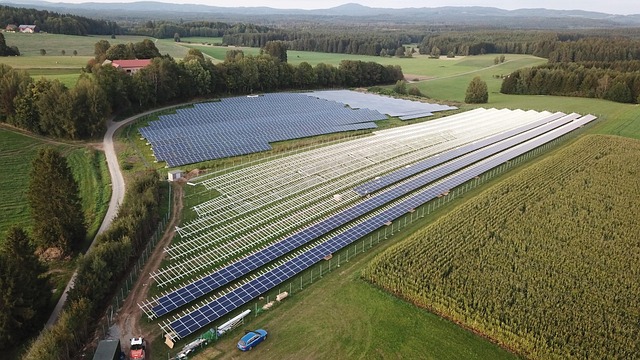Exploring the Global Shift Towards Solar Energy
In recent years, the world has seen a dramatic shift in energy consumption patterns, with a significant trend toward renewable energy sources—most notably, solar energy. This shift is driven by a combination of technological advancement, economic necessity, environmental concerns, and geopolitical factors. As nations and individuals recognize the importance of sustainable practices for the health of the planet and future generations, solar energy stands out as a leading solution. This article delves into the global transition toward solar energy, examining its impetus, technological advancements, societal impacts, and future potential.
The Case for Solar Energy
Solar energy, derived from the sun’s rays, is abundant, virtually inexhaustible, and environmentally friendly. With growing awareness of climate change and the environmental degradation caused by fossil fuels, the urgency to adopt cleaner energy sources has never been more pressing. Solar energy offers numerous advantages over conventional energy sources, including:
First, it contributes to a reduction in greenhouse gas emissions. According to the Intergovernmental Panel on Climate Change (IPCC), active reduction in carbon emissions is essential for mitigating climate change. Solar energy production emits no carbon dioxide during operation, making it a vital component of strategies to combat climate change.
Second, solar energy is a locally sourced resource. By harnessing sunlight, countries can reduce their reliance on imported fuels, which not only enhances energy security but also stimulates local economies. This localized generation of power can decrease transmission losses and improve grid reliability.
Moreover, the cost of solar energy has dramatically decreased in recent years, making it economically viable for individuals and businesses alike. According to the International Energy Agency (IEA), the cost of solar photovoltaic (PV) systems has dropped by over 80% since 2010, making it one of the cheapest sources of energy in many regions.
Technological Advancements and Innovations
The advancement of solar technology has played a crucial role in the promotion of solar energy globally. Innovations have improved the efficiency, affordability, and versatility of solar panels, contributing to their widespread adoption. For example, new materials, such as perovskite solar cells, hold the potential to further enhance energy conversion efficiency, greatly surpassing traditional silicon-based technologies.
Energy storage solutions, particularly lithium-ion batteries, have also seen significant advancements. These innovations allow for better integration of solar energy into existing grids by storing excess energy produced during peak sunshine hours for use during low production times, thus ensuring a steady energy supply regardless of sunlight variability.
The advent of smart grids and Internet of Things (IoT) technology facilitates improved demand management and energy distribution, allowing for more sophisticated monitoring and an efficient use of solar energy. These developments enable households and businesses to optimize their energy consumption according to renewable energy availability.
Global Adoption Trends
The global shift toward solar energy is evident in various regions worldwide. Countries like Germany and China are leading the way, showcasing successful policies and initiatives that encourage solar adoption. Germany’s feed-in tariff policy, which guarantees long-term contracts and compensation to solar energy producers, has resulted in vast installations across the nation, making it one of the pioneers in renewable energy integration.
On the other hand, China has rapidly transformed into the world’s largest producer of solar panels. In addition to manufacturing, the country has been heavily investing in domestic solar projects to meet its energy needs and mitigate pollution from coal dependence. Both the government and private sector have recognized the economic gains of investing in solar energy, thereby facilitating this transition.
In the United States, too, solar energy has carved a niche in the energy market. State governments have enacted various incentive programs, including tax credits and rebates, to accelerate solar adoption. The growing interest among consumers in decentralized energy solutions, such as roof-mounted solar panels, reinforces this trend. The increase in corporate investment in solar farms and power purchase agreements further exemplifies the business world’s strategic pivot toward renewable energy sources.
The Societal Impact
As the world transitions to solar energy, the social implications are significant. Job creation is one of the most direct benefits of expanding the solar industry. According to the Solar Foundation’s National Solar Jobs Census, the U.S. solar industry has created over 250,000 jobs, attracting a wide range of skill sets, from engineering to sales and installation. Growth in the solar workforce continues to outpace many other sectors, demonstrating the industry’s potential as a robust job generator.
Furthermore, solar energy can have a transformative effect on energy access, especially in remote or underserved communities. Off-grid solar solutions are playing a crucial role in providing electricity to millions of people globally who have no access to reliable energy. This access can improve education, healthcare, and overall quality of life by promoting economic development and reducing dependence on costly and sometimes hazardous energy sources like kerosene.
Challenges on the Road Ahead
Despite its numerous advantages and increasing adoption, the transition toward solar energy faces several challenges. The initial capital investment for solar infrastructure can be substantial, particularly in regions where financing options are limited. Government subsidies and incentives play a critical role in overcoming this barrier; however, their availability can vary dramatically across different countries and jurisdictions.
Furthermore, the integration of solar energy into existing energy grids poses technological challenges. To successfully incorporate high levels of solar energy, utilities must invest in modernizing infrastructure and implementing energy management systems to handle the variability of solar power generation. Smart technologies must be further developed to facilitate this integration effectively.
Environmental concerns, particularly surrounding solar panel manufacturing and disposal, also require attention. The production process can involve hazardous materials, and without proper recycling processes, end-of-life panels may contribute to electronic waste. Innovations in sustainable manufacturing practices and recycling will be essential to alleviate these concerns and enhance the solar energy sector’s environmental credentials.
The Future of Solar Energy
Looking ahead, the future of solar energy appears bright, supported by a global consensus on the need for sustainable and clean energy. As nations strive to meet international climate agreements, such as the Paris Agreement, the role of solar energy is expected to expand significantly. Research and development into more efficient solar technologies, combined with supportive policy frameworks, will likely propel the industry forward.
Moreover, as energy storage technology continues to evolve, the viability of solar energy as a reliable energy source will improve. With predicted advancements in grid technology and a focus on smart energy solutions, solar energy can become a cornerstone of a decentralized energy landscape, allowing households to generate, store, and utilize their energy effectively.
In conclusion, the global shift towards solar energy is not only a reflection of technological and economic changes but also a response to the social and environmental imperatives of our time. While challenges remain, the momentum for solar energy continues to grow. As individuals, communities, and nations embrace solar solutions, it becomes increasingly clear that solar energy will play a critical role in shaping a sustainable, resilient, and equitable energy future for generations to come.



